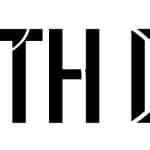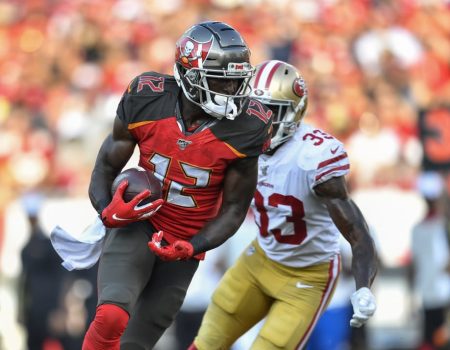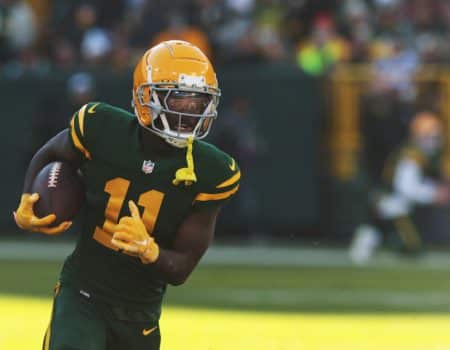Matt LaFleur will be the guy calling the plays in Green Bay this year. What does this mean for the fantasy value of Aaron Jones and others? Mike Sullivan (@mikesully58) breaks it down.
We’ve now explored possible fantasy implications of new coaching changes with the hiring of Adam Gase and Kliff Kingsbury. Now, it is our time to head north and explore what the new Green Bay Packers head coach, Matt LaFleur, means for fantasy football.
Prior to being named head coach of the Packers, LaFleur was the offensive coordinator for the Tennessee Titans in 2018 and the Los Angeles Rams in 2017. He comes from the Sean McVay coaching tree, which continues to lose numerous “branches” as franchises begin to hope to find their own version of McVay. Prior to that he had been quarterbacks coach for the Redskins and Falcons.
In this article we will be taking a look at LaFleur’s offensive scheme and attempt to extrapolate as much information as possible to get an idea of how his hiring might impact the Packers.
LaFleur only has two years of play calling duties under his belt and one may wonder about his time with the Rams and how much play calling he actually did. This doesn’t give us a whole lot of information to work from, but we will do our best.
No matter what, LaFleur will be the guy making play calls in Green Bay come Sundays this season and we have to look at what this might mean for fantasy.
We will be breaking down each position to see what the new coaching change might mean for Aaron Rodgers, Davante Adams, Aaron Jones, and a few other players who may have fantasy impact. As I said above, we will take a look at past seasons to try and give us a good idea as to what is to come in 2019. Overall rankings referenced will be in PPR formats.

Overall Fantasy Offense
In 2018, as Titans Offensive Coordinator, LaFleur put together some polarizing statistics. The offense was eighth overall in total yards and seventh in rushing yards as well as rushing yards per game. On the other hand, he was 25th in total yards per game, 29th in passing yards and passing yards per game and 27th in total points and points per game.
In 2017, under Sean Mcvay and Matt Lafleur, the Rams were 10th in total yards and yards per game, 10th in total passing yards and passing yards per game, 8th in total rushing yards and rushing yards per game, 1st in points and points per game.
Overall the Rams offense looked a lot better than the Titans of 2018, but once again we have to remind ourselves that McVay was the primary play caller for the Rams as they remained a high-powered offense after McVay’s departure.
Fantasy Quarterbacks
In 2018, Lafleur had Marcus Mariota leading the Titans pass offense, which was near the bottom in passing yards and passing yards per game. Mariota managed to fight through injury (questionable how effective it was) and started in 13 games. Mariota had a stat-line of 228-331 (68.9% completion percentage), 2,528 yards, 11 touchdowns, and eight interceptions. Blaine Gabbert also started in three games and had a stat line of 61-101 (60.4% completion percentage), 626 yards, 4 touchdowns, and 4 interceptions.
If we dive a little deeper the two quarterbacks averaged 129 yards per game, 6.9 yards per attempt, and 21.4 yards per completion. They combined for an average quarterback rating last of 42.15. As we’ve talked about before, the passing game just really wasn’t working and Mariota struggled as he finished as the 28th ranked quarterback in 2018 in terms of fantasy football.
Now if we look at the 2017 season, we can explore a little bit about how Jared Goff did. Again, we all know Sean McVay is the primary play caller, but we can possibly explore these stats to get an idea of what LaFleur might prefer to do with his offense. In 15 games, Goff managed a stat-line of 296-477 (62.1% completion percentage), 3,804 yards, 28 touchdowns and seven interceptions. He also had eight yards per attempt, 12.9 yards per completion and averaged 253 yards per game.
Fantasy Implications
Aaron Rodgers is arguably one of the best quarterbacks to play the game and will definitely help LaFleur transition to his new role with a new team. One thing I often think about with veteran quarterbacks is how much input into the offense they have and how much control of audibles and play calling they might have. It is tough to say, due to his limited time as an OC, as to how LaFleur may impact him, in fact, I feel like it will be Rodgers having more of an impact on LaFleur as a play caller.
Either way, we can still explore what might be to come of the new Rodgers/LaFleur marriage. Rodgers has been a perennial QB1 and often drafted as a top-three option, but struggled last year as he essentially played on one leg. Despite a down year, he still finished as a top-12 quarterback option and he is light years ahead of Mariota in terms of his NFL skillset.
I believe Rodgers stays relevant as a top-12 option, but it will be interesting to see how the play calling impacts him. In 2018, LaFleur passed on approximately 46% of plays while the Packers passed nearly 62% of the time. Rodgers attempted 597 passes to Mariota’s 331 in 2018.
My biggest concern with Rodgers this year will be how much LaFleur works the run game in and if he tries to alter how Rodgers plays the game. Regarless, Rodgers, sits at a fifth round ADP (5.05) currently and figures to remain a top-12 option.
Fantasy Running Backs

LaFleur took an interesting approach when it came to his running backs in 2018. As you may know, they had signed Dion Lewis to pair with Derrick Henry and worked with a running back by committee most of the year.
Henry finally was able to run free towards the end of the year and had a total stat line of 215 attempts, 1,095 rushing yards and twelve touchdowns. He averaged 4.9 yards per attempt and 66.2 yards per game. On the other side of things, Lewis also put together a stat-line of 155 attempts, 517 yards and one touchdown. He also managed 59 receptions, 400 receiving yards and one touchdown.
In 2017, LaFleur got to witness first hand what a running system without a running back committee looked like (it also helps that it was Todd Gurley). Gurley managed 279 attempts, 1,305 rushing yards, 64 receptions, 788 passing yards, and 19 total touchdowns. Malcolm Brown was second up in rushing attempts with just 69.
Now, Gurley is definitely a completely different player than Henry is, and he may have felt that he needed to supplement Henry’s play style with the pass-catching of Lewis. However, it is at least noteworthy to say that LaFleur has been exposed to both a workhorse backfield as well as a running back by committee.
Fantasy Implications
Despite Henry’s end of season run, LaFleur has come out and said that he believes in a running back by committee approach, as he feels like the running back position is a rough one to play in the NFL.
Now, we have to wonder if is this just coach speak, or did LaFleur miss what happened once Henry was given significant carries. Either way, we have to look at the possible implications for Aaron Jones and other Green Bay running backs.
Jones has the skills to be a great runner and receiver out of the backfill, which is something LaFleur witnessed in LA with Gurley. I believe Jones has great upside if he is given the opportunity to do so, but if he is hampered by a running back by committee then this may lead to more headaches for fantasy owners. He’s got a current third round ADP (3.06) and could bring a significant return on that third round value should he stay healthy and be the workhorse people are expecting.
Outside of Jones, we have Jamaal Williams with a fourteenth round ADP (14.09) who has shown to be serviceable at times, but Jones appears to be the superior all around back. Williams may be a good late stash to see if LaFleur does happen to go with an RBBC, but it’s tough to tell and Williams would be the less appealing part of that RBBC.
Ultimately, it will come down to LaFleur and seeing what he wants to do with his backfield, but I do like Jones as a third-round pick currently. This might be something to pay attention to once training camp and the preseason roll around.
Fantasy Wide Receivers
The passing game in Tennessee really struggled in 2018, as it ranked 29th in passing and passing yards per game. This trickled down into fantasy, as Corey Davis was the highest ranked wide receiver in 2018 for the Titans, yet he finished 29th in overall rankings with a stat-line of 65 receptions, 891 yards, and four touchdowns on 112 targets.
Corey Davis saw a significant chunk of the targets in Tennessee, as no other receiver had over 56 targets. Davis did flash at times, but the passing game was rough in Tennessee last year. It most likely didn’t help that Mariota was playing with an injured hand.
In 2017 with the Rams, LaFleur watched them have a little more success at the wide receiver position, as it’s top three options all placed within the top 40 at the position, but neither of them finished better than 25th. Cooper Kupp finished the highest ranked by year’s end, with a stat line of 62 receptions, 869 yards, and five touchdowns.
The target share was a little more spread out for Kupp, Robert Woods, and Sammy Watkins, but none of them eclipsed 100 targets. Overall the passing attack was more efficient than the 2018 Titans, but once again McVay also was the main signal caller for the Rams.
Fantasy Implications
Davante Adams was a monster in 2018, and his current ADP reflects that as he sits currently tied with DeAndre Hopkins for the top wide receiver (1.07). I think Adams continues to show his greatness from 2018 where he averaged 11.2 targets in fifteen games with a 65% catch rate. He’s locked in as the number one option in Green Bay and, even with LaFleur being new to town, I don’t think Rodgers shys away from getting the ball to Adams (Rodgers has already talked about getting the ball to him more).
One thing that is promising is Corey Davis saw around a 26% share of targets in Tennessee, which is near where Adams was with his 28% share of targets.
Now, this is where it gets interesting as we explore possible fantasy implications for the receivers outside of Adams. There really isn’t a clear cut number two quite yet as Geronimo Allison, Equimonious St. Brown, and Marquez Valdes-Scantling have all gotten their fair share of hype. Allison is currently being drafted in the ninth round (9.01) while Valdes-Scantling is being drafted in the tenth (10.02). St. Brown is going undrafted.
Both Allison and Valdez-Scantling seem to have possible upside to take on that wide receiver two spot in this offense, but it’s tough to tell who it might be right now. Currently, I like Valdez-Scantling with his ADP nearly a round later. This will be something to keep an eye on as training camp rolls around because if he does secure the job his ADP may begin to creep up (or flip with Allison). Either way I’m probably going to lean towards value with Green Bay’s number two option, which currently Valdez-Scantling offers that value.
Fantasy Tight Ends
In 2018, the Titans struggled to find a working option at tight end after Delanie Walker was injured. In fact, Jonnu Smith put up the best numbers at the tight end for the Titans with a stat-line of 20 receptions, 258 yards and three touchdowns. Luke Stocker was a close second with 15 receptions, 165 yards and two touchdowns. Whether it be injury or just not being utilized, the tight end position really wasn’t fantasy relevant for the Titans in 2018.
In 2017, the tight end position with the Rams was still not incredibly productive. Tyler Higbee finished the year with a stat-line of 25 receptions, 295 yards and one touchdown. Gerald Everett finished with 16 receptions, 244 yards and two touchdowns. Even with a 10th ranked passing attack, the tight ends just weren’t utilized and the passing game appeared to run through the three receivers. Just like for the Titans in 2018, the tight end appeared to non-relevant for fantasy purposes.
Fantasy Implications
Jimmy Graham currently sits with a 13th-round ADP (13.08) after what many felt like was a down year. At age 32 years, Graham managed 55 receptions, 636 yards, and two touchdowns. Standing 6’7’’ Graham still presents a mismatch problem in the red zone and could see a bump in touchdowns in year two with Rodgers, but Green Bay top scoring tight ends have averaged 3.4 touchdowns per season in the last ten years with Rodgers.
However, there were three seasons where a tight end scored eight touchdowns total. Also, Green Bay’s top targeted tight end has also averaged, over the last 10 years, 64.5 receptions (right around tight end 16 last year based on targets).
Graham did play with a broken thumb in 2018, but he’s one I might be avoiding in redraft leagues come draft time. If you are willing to take a shot on him then you will be hoping for an increase in his total touchdowns, as I don’t see him garnering a whole lot more receptions. You also are hoping for Graham to stay healthy, and he has missed a couple of games each of the past two years due to injury. He also has rookie Jace Sternberger now sitting behind him, which may not be a direct threat, but presents another possible barrier to fantasy football relevance. I’m looking elsewhere for a tight end in 2019.






No Comment! Be the first one.